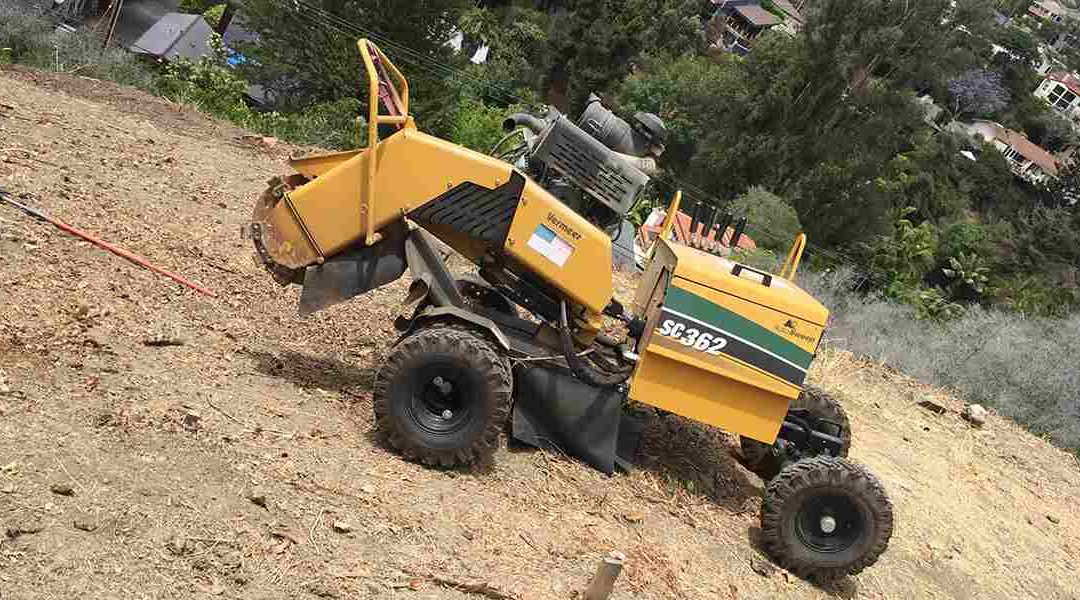It is possible for roots to grow back even after tree removal. Fortunately, there are measures you can put in place to prevent roots from coming back to haunt you.
In this article, Bentonville’s professional tree service providers will share tips to help you learn how to stop tree roots from growing back.
Can Roots Grow Back?
Many property owners believe that cutting down a tree and removing its stump gets the work done. However, the roots inches deep in the ground can and will continue growing if you do not take the time to remove them.
Though this might not seem like a serious issue, these roots can wreak havoc on your lawn. For instance, surface roots can uproot your pavers. In extreme cases, tree roots can find their way to your property’s sewer line, drain pipes, or foundation.
Fortunately, learning how to stop tree roots from growing back can help you prevent this.
How to Stop Tree Roots from Growing Back
You can prevent tree roots from growing back using various methods. Here are a few ways you can implement to prevent tree roots from returning.
Kill Tree Roots with Homemade Remedies
Consider using various home remedies to kill leftover roots. Some of these remedies include using:
- Rock salt – Drill holes into the roots and fill each hole with salt. Repeat this every few months until the roots become hollow and wilted.
- Vinegar – Pour vinegar into the holes you drill into the roots. If leaves or sprouts appear, spray them with vinegar as well.
- Boiling water – Drill holes between three and four inches deep and cover them with boiling water. Check back after a few days and repeat the step if you notice any change.
Install a Root Barrier
Root barriers help you prevent roots from spreading into specific areas. They come in various materials, like metal, concrete, and plastic. The material you pick will depend on the application and your specific needs.
Treat Roots with Systemic Herbicides
Systemic chemical herbicides such as glyphosate, imazapyr, and triclopyr can kill leftover roots quickly.
We should note that these herbicides can harm more than just plants, so ensure you take safety precautions and only use them as directed.
To apply the herbicide, complete the following steps:
- Cut the leftover stump and expose as many roots as possible.
- Apply the herbicide using a paintbrush or spray.
- Avoid splashing the herbicide on any nearby plants.
- Check the roots after two or three weeks.
- Retreat them if you do not notice any change.
Fill the Hole with Concrete, Rocks, or Soil
Consider filling the hole where the tree grew with rocks, concrete, or soil. Doing so not only kills the leftover roots but also offers plenty of additional benefits, such as:
- Preventing erosion
- Supporting the roots of nearby trees
- Replenishing the nutrients the previous tree used
Manually Dig Out the Remaining Roots
Though it can be challenging and time-consuming, manually digging out leftover roots is the best way to prevent them from growing back. Try the following:
- Dig a trench around the leftover stump.
- Loosen the roots using a pry bar.
- Dig up the roots with a shovel.
DIY or Hire a Professional
Though you can implement these measures yourself, consulting a trained professional provides the best chances of success.
Trees N Scapes Unlimited has a highly skilled team ready to implement the lasting solutions required. Whether you need help learning how to stop tree roots from growing back or addressing partially uprooted trees, we’ve got you covered.
Contact Trees N Scapes Unlimited today at (479) 802-5766 to discuss your needs and request your free estimate.

